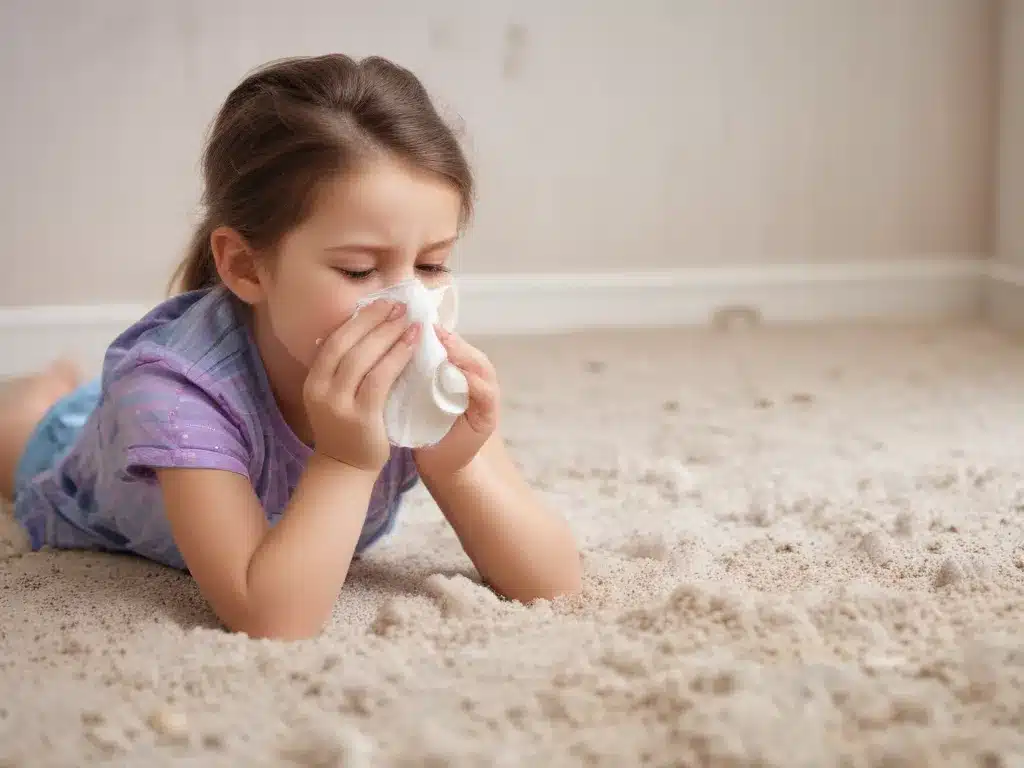Introduction
As the winter chill fades away and the warmth of spring envelops us, many of us eagerly anticipate the blooming of flowers and the return of vibrant greenery. However, for those suffering from dust allergies, this transition can also bring a wave of discomfort. Dust, a ubiquitous presence in our homes, can trigger a wide range of allergy symptoms, from sneezing and itchy eyes to more severe respiratory issues. In this article, I will delve into the intricacies of tackling dust allergy symptoms, providing practical strategies and tips to help you create a healthier living environment.
Understanding Dust Allergies
To combat dust allergies effectively, it is crucial to comprehend their nature and the factors that contribute to their severity. Dust allergy – causes – immunological response to dust particles. The human body – recognizes – harmless dust as a threat, triggering an overreaction from the immune system. This overreaction – results – in the release of histamine and other chemicals, leading to the manifestation of various allergy symptoms.
Dust – consists of – a complex mixture of particles, including dead skin cells, pet dander, mold spores, and tiny fragments of fabric and insulation materials. Dust mites – feed on – these organic matter, and their fecal matter and body parts can further aggravate allergic reactions.
Common Dust Allergy Symptoms
Dust allergy symptoms – can range – from mild to severe, depending on the individual’s sensitivity level and exposure. Here are some of the most common symptoms associated with dust allergies:
- Sneezing
- Runny or stuffy nose
- Itchy, watery eyes
- Coughing
- Wheezing or difficulty breathing
- Skin rashes or eczema
- Headaches
- Fatigue
If left unaddressed, dust allergies – can potentially lead – to more serious respiratory issues, such as asthma attacks or sinus infections.
Identifying Dust Allergy Triggers
The first step in tackling dust allergies is to identify the specific triggers within your home. While dust can accumulate in various areas, certain hotspots tend to harbor higher concentrations of allergens:
- Carpets and rugs
- Upholstered furniture
- Mattresses and bedding
- Curtains and drapes
- Stuffed toys
- Bookshelves and storage areas
- Air vents and ductwork
By pinpointing these areas, you – can target – your cleaning efforts more effectively and minimize exposure to allergens.
Effective Cleaning Strategies
Proper cleaning techniques – play a crucial role – in reducing dust allergen levels in your home. Here are some proven strategies to incorporate into your cleaning routine:
-
Vacuuming: Regular vacuuming – removes – surface dust and debris. However, ensure that your vacuum cleaner – is equipped – with a HEPA (High-Efficiency Particulate Air) filter, which effectively captures tiny particles without releasing them back into the air.
-
Dusting: Dusting – should be done – with a damp cloth or microfiber mop, as dry dusting can stir up allergens and make them airborne. Pay special attention to hard-to-reach areas and surfaces where dust tends to accumulate.
-
Washing Bedding: Bedding – harbors – a significant amount of dust mites and their allergens. Wash your sheets, pillowcases, and blankets – in hot water (at least 130°F or 54°C) – every one to two weeks to effectively kill dust mites and remove allergens.
-
Cleaning Upholstery: Upholstered furniture – can trap – dust and dander, making it a breeding ground for allergens. Vacuum these surfaces regularly, and consider having them professionally cleaned or steam-cleaned periodically to remove embedded allergens.
-
Air Purifiers: High-quality air purifiers – equipped with HEPA filters – can help capture airborne allergens and improve indoor air quality. Place them in commonly used rooms or areas with higher dust concentrations.
-
Humidity Control: Dust mites – thrive – in humid environments. Maintaining relative humidity levels between 30% and 50% – can create – an inhospitable environment for these allergens.
Minimizing Dust Accumulation
While cleaning is essential, minimizing dust accumulation in the first place can significantly reduce allergen exposure. Consider implementing the following strategies:
-
Decluttering: Clutter – provides – more surfaces for dust to settle. Regularly declutter your living spaces and minimize knick-knacks or decorative items that can attract dust.
-
Window Treatments: Heavy curtains and blinds – can trap – dust and allergens. Consider replacing them with washable or easy-to-clean alternatives, such as roll-up shades or sheer curtains.
-
Flooring: Hard surfaces – are easier to clean – than carpets and rugs, which can harbor significant amounts of dust and allergens. If possible, opt for hard flooring options like wood, tile, or laminate.
-
Pet Grooming: If you have pets, regular grooming – can help reduce – shedding and minimize pet dander in your home.
-
Outdoor Shoes: Establish a “no-shoes” policy inside your home to prevent tracking in dust and allergens from the outdoors.
Seeking Professional Help
In some cases, despite your best efforts, dust allergies may persist or worsen. If you experience severe or persistent symptoms, it is advisable to seek professional help from an allergist or immunologist. These healthcare professionals – can provide – personalized guidance, recommend appropriate treatments, and help you develop a comprehensive allergy management plan tailored to your specific needs.
Conclusion
Tackling dust allergy symptoms in your home this spring requires a multifaceted approach. By understanding the nature of dust allergies, identifying triggers, implementing effective cleaning strategies, minimizing dust accumulation, and seeking professional help when needed, you – can create – a healthier living environment and breathe easier during this beautiful season. Remember, proactive measures and consistent efforts – can make – a significant difference in alleviating the discomfort caused by dust allergies.








